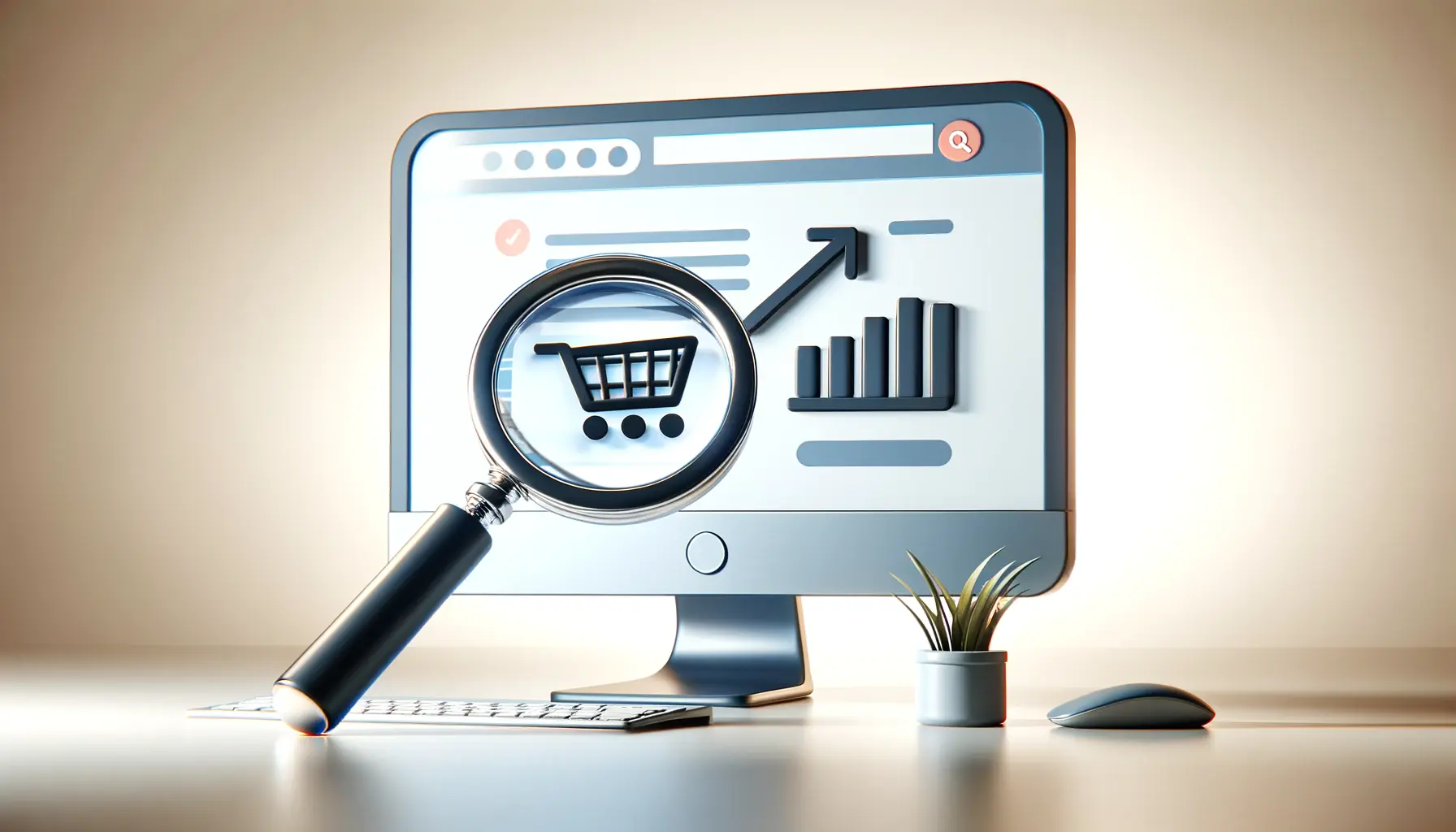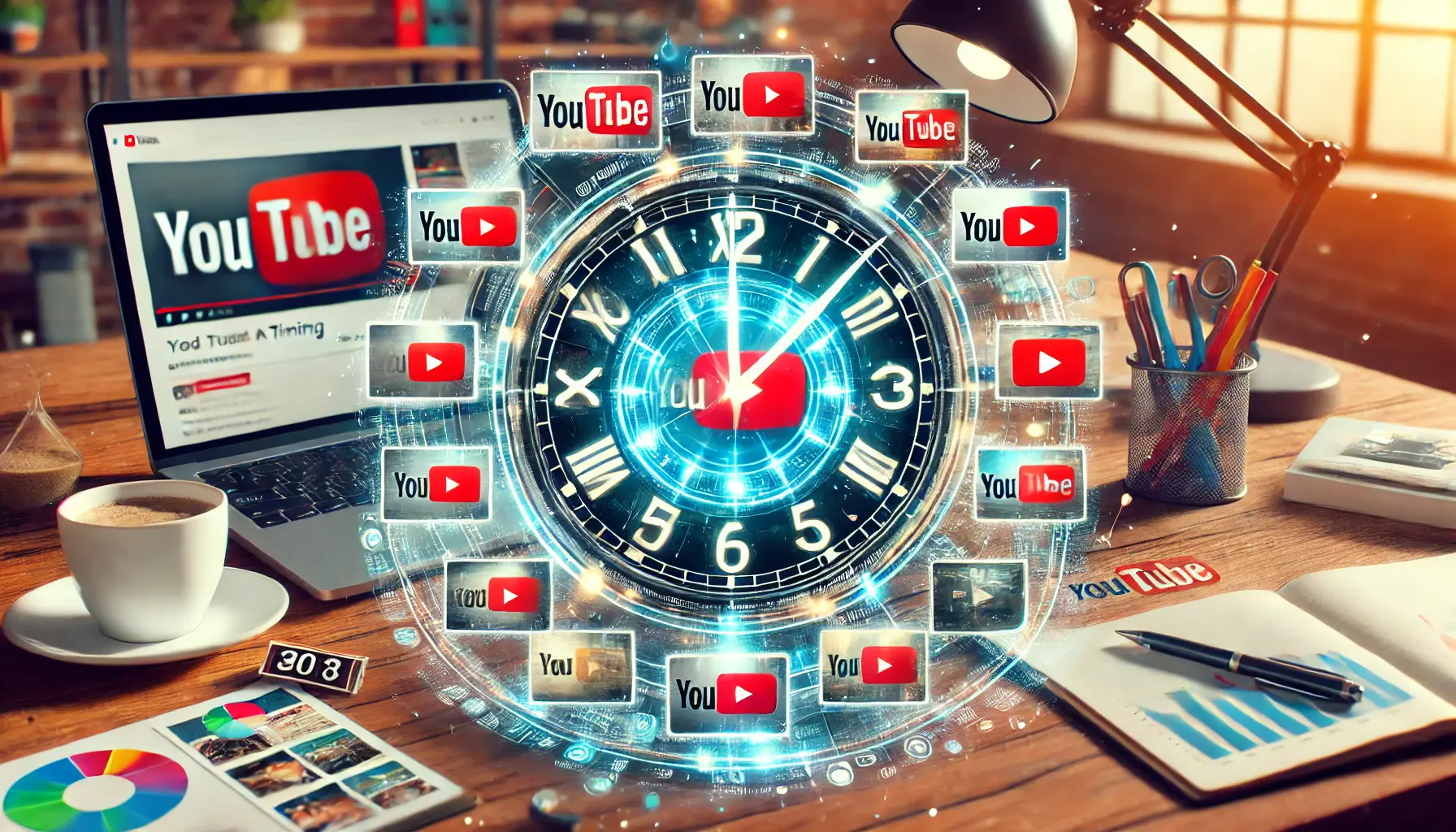Understanding the science of ad timing is crucial for any marketer looking to optimize their Apple Search Ads Campaigns.
In a digital landscape where every click and impression counts, timing your ads perfectly can be the difference between a successful campaign and one that falls flat.
This article delves into the intricate relationship between ad timing and campaign success, offering insights and strategies to harness the full potential of your advertising efforts.
At the heart of this exploration is the recognition that consumer behavior is not static; it ebbs and flows in response to numerous factors, including time of day, day of the week, and seasonality.
By aligning ad delivery with these patterns, advertisers can significantly increase their chances of capturing attention and driving action.
This approach, grounded in data and analytics, transforms ad timing from a guessing game into a strategic component of campaign optimization.
- Understanding Consumer Behavior and Ad Timing
- Optimizing Ad Schedules for Different Campaign Goals
- Leveraging Technology for Smarter Ad Timing
- Ad Timing in the Context of Consumer Journeys
- Case Studies: Success Stories of Optimal Ad Timing
- Overcoming Challenges in Ad Timing Optimization
- Future Trends in Ad Timing Optimization
- Mastering the Art of Ad Timing for Campaign Success
- FAQs on The Science of Ad Timing in Campaign Success
Understanding Consumer Behavior and Ad Timing
Identifying Peak Engagement Times
One of the first steps in mastering ad timing is to identify when your target audience is most active and receptive.
This involves analyzing data on app usage patterns, which can vary widely depending on the demographic and psychographic characteristics of your audience.
For instance, B2B products might see higher engagement during weekdays, particularly in the morning when professionals start their workday.
Conversely, B2C campaigns could benefit from evening or weekend scheduling when consumers are more likely to browse and shop online.
Utilizing tools and analytics within the Apple Search Ads platform can provide invaluable insights into when your ads are most likely to be seen and interacted with.
This data-driven approach allows advertisers to schedule their campaigns for maximum visibility, ensuring that their messages reach the audience when they are most likely to be engaged and attentive.
Seasonality and Market Trends
Another critical aspect of ad timing is understanding the role of seasonality and market trends.
Certain times of the year can dramatically influence consumer behavior, with holidays and seasonal changes driving shifts in interest and purchasing patterns.
For example, retail businesses might ramp up their advertising efforts during the holiday season to capture the surge in gift-buying activity.
Similarly, travel-related ads could be timed to coincide with peak vacation planning periods.
Staying attuned to these trends requires not only a keen understanding of your industry but also the agility to adapt your advertising strategy in response to emerging opportunities.
By anticipating these shifts and timing your ads accordingly, you can capitalize on increased consumer interest and maximize the impact of your campaigns.
The key to successful ad timing lies in a deep understanding of your audience’s behavior and the external factors that influence their engagement. By leveraging data and analytics, advertisers can strategically schedule their campaigns to align with these patterns, significantly enhancing campaign performance and ROI.
Optimizing Ad Schedules for Different Campaign Goals
Every advertising campaign has a unique set of objectives, from increasing brand awareness to driving direct sales.
The timing of your ads should reflect these goals, with different strategies employed to maximize effectiveness for each type of campaign.
Understanding how to tailor ad timing to specific objectives is crucial for optimizing performance and achieving desired outcomes.
For campaigns focused on brand awareness, the goal is to reach as wide an audience as possible.
This often means scheduling ads during peak usage times across a broad range of days and times.
However, for campaigns with conversion-oriented goals, such as encouraging app downloads or generating leads, the strategy shifts towards targeting specific times when users are most likely to take action.
Strategies for Awareness Campaigns
- Broad Reach: Schedule ads to run during high-traffic periods to maximize visibility.
- Consistent Presence: Maintain a steady flow of ads throughout the campaign duration to keep your brand top of mind.
- Diverse Timing: Experiment with ads at different times and days to identify patterns in audience engagement.
Strategies for Conversion-Oriented Campaigns
- Targeted Timing: Focus ad delivery during times when users are most likely to convert, based on historical data and consumer behavior analysis.
- Limited Duration: Concentrate ad spend on short bursts of activity to capture attention and drive immediate action.
- Adaptation to User Behavior: Adjust schedules based on real-time data and feedback to continually refine timing for optimal performance.
By aligning ad timing with campaign goals, advertisers can more effectively allocate their budgets, enhance ad relevance, and improve overall campaign efficiency.
This tailored approach ensures that ads not only reach the right audience but do so at the most opportune moments to influence behavior and drive results.
Adapting your ad schedule to match campaign objectives is not a set-it-and-forget-it process. Continuous monitoring and adjustment based on performance data are essential for staying aligned with audience behavior and maximizing campaign success.
Leveraging Technology for Smarter Ad Timing
In the rapidly evolving digital advertising landscape, technology plays a pivotal role in enabling smarter, more effective ad timing strategies.
Advanced tools and platforms offer advertisers unprecedented insights into consumer behavior, along with the ability to automate ad delivery for optimal timing.
Embracing these technological advancements can significantly enhance the precision and effectiveness of your ad campaigns.
Machine learning algorithms and artificial intelligence (AI) are at the forefront of this technological revolution.
These technologies can analyze vast amounts of data to identify patterns and predict the best times to serve ads to individual users.
This level of personalization ensures that your ads are not only delivered at the right time but also to the right person, maximizing the chances of engagement and conversion.
Key Technologies and Their Impact
- Programmatic Advertising: Automates the buying and placement of ads in real-time, allowing for dynamic scheduling based on user behavior and preferences.
- AI and Machine Learning: Analyzes user data to predict optimal ad timing, continuously learning and adjusting based on campaign performance.
- Ad Scheduling Tools: Provides advertisers with the ability to set specific times for ads to run, based on historical data and predictive analytics.
Implementing Technology-Driven Ad Timing
- Data Integration: Combine data from various sources, including website analytics, CRM systems, and third-party platforms, to gain a comprehensive view of your audience.
- Testing and Optimization: Use A/B testing and other experimentation methods to refine ad timing strategies based on real-world performance.
- Continuous Monitoring: Employ dashboards and reporting tools to track the effectiveness of ad timing adjustments and make data-driven decisions.
The integration of technology into ad timing strategies not only enhances the ability to reach audiences at the most opportune moments but also offers a competitive edge in a crowded marketplace.
By leveraging these tools, advertisers can ensure that their campaigns are as effective and efficient as possible, driving better results and higher ROI.
While technology can significantly improve ad timing, it’s important to maintain a balance between automation and human oversight. Regularly review automated decisions and adjust strategies as needed to ensure alignment with overall campaign goals.
Ad Timing in the Context of Consumer Journeys
Ad timing is not just about choosing the right moment of the day or week; it’s intricately linked to the consumer’s journey towards a purchase or conversion.
Understanding where your target audience is in their decision-making process allows for the strategic timing of ads that can guide them to the next step more effectively.
This approach ensures that your advertising efforts are not only seen but are also relevant and persuasive at each stage of the journey.
Mapping out the consumer journey involves identifying key touchpoints where potential customers interact with your brand, from initial awareness through consideration, decision-making, and post-purchase behavior.
By aligning ad timing with these stages, advertisers can deliver the right message at the right time, significantly enhancing the impact of their campaigns.
Aligning Ad Timing with Consumer Decision Stages
- Awareness Stage: At this initial stage, broad-reaching ads aimed at introducing your brand or product are most effective. Timing these ads to coincide with peak activity periods ensures maximum visibility.
- Consideration Stage: As consumers start to evaluate their options, targeted ads that highlight unique features or benefits can sway their decision. Timing these ads for moments when consumers are researching or comparing products can boost engagement.
- Decision Stage: When consumers are ready to make a purchase, timely ads with strong calls to action and limited-time offers can create a sense of urgency, encouraging immediate action.
- Post-Purchase Stage: After a purchase, ads focusing on additional products, loyalty programs, or feedback requests can enhance customer retention. Timing these ads shortly after a purchase can capitalize on positive buying experiences.
By considering the consumer journey in ad timing strategies, advertisers can create more cohesive and persuasive campaigns that effectively lead consumers from awareness to action.
This targeted approach not only improves the efficiency of ad spend but also enhances the overall customer experience with your brand.
Correctly timed ads can significantly influence consumer behavior at each stage of the journey, making ad timing a crucial element of successful marketing strategies.
Case Studies: Success Stories of Optimal Ad Timing
Exploring real-life examples provides valuable insights into the practical application and benefits of optimal ad timing.
These case studies highlight how businesses across various industries have leveraged strategic ad timing to achieve remarkable campaign success, demonstrating the transformative power of aligning ad delivery with audience behavior and preferences.
One notable example involves a leading e-commerce platform that implemented a dynamic ad scheduling strategy based on consumer shopping patterns.
By analyzing data on peak shopping times, the company adjusted its ad campaigns to run during these high-activity windows, resulting in a significant increase in click-through rates and sales conversions.
E-commerce Platform Maximizes Holiday Sales
- Challenge: The platform struggled with low engagement rates during off-peak hours, leading to wasted ad spend.
- Strategy: Utilized consumer data to identify peak shopping times during the holiday season and scheduled ads accordingly.
- Outcome: Achieved a 40% increase in sales conversions and a 25% reduction in cost per acquisition during the campaign period.
Travel Agency Boosts Bookings with Seasonal Timing
- Challenge: Needed to increase bookings during the competitive summer travel season without significantly increasing ad spend.
- Strategy: Scheduled ads to coincide with periods when consumers were most likely to plan summer vacations, based on historical booking data.
- Outcome: Saw a 30% increase in bookings and a higher return on ad spend compared to the previous year.
These case studies underscore the importance of ad timing in maximizing campaign effectiveness.
By understanding and adapting to consumer behavior, businesses can optimize their advertising efforts, achieving better results with more efficient use of resources.
Featured Info: Strategic ad timing, informed by data and aligned with consumer behavior, can significantly enhance campaign performance across industries.
Overcoming Challenges in Ad Timing Optimization
While the benefits of optimizing ad timing are clear, advertisers often face several challenges in implementing effective strategies.
These obstacles can range from data complexity and integration issues to changing consumer behaviors and market dynamics.
Overcoming these challenges is crucial for advertisers aiming to leverage ad timing for campaign success.
One of the primary hurdles is the sheer volume and complexity of data required to inform ad timing decisions.
Advertisers must collect, analyze, and act upon data from multiple sources, including web analytics, consumer behavior studies, and competitive analysis.
Ensuring data accuracy and relevance is paramount, as is the ability to adapt strategies based on real-time insights.
Strategies for Data Management and Analysis
- Data Integration: Employ advanced data management platforms to consolidate data from various sources, facilitating comprehensive analysis and insight generation.
- Real-Time Analytics: Utilize tools that offer real-time analytics capabilities, allowing for swift adjustments to ad timing based on current performance and market conditions.
- Expertise and Resources: Invest in skilled analysts and the necessary technological resources to interpret data effectively and implement timely adjustments to ad campaigns.
Adapting to Consumer Behavior and Market Changes
- Continuous Monitoring: Keep a close eye on market trends and consumer behavior, using this information to anticipate changes that may affect optimal ad timing.
- Flexibility: Build flexibility into ad campaigns, allowing for quick shifts in timing and strategy in response to unexpected market developments or consumer trends.
- Testing and Learning: Regularly test different ad timing strategies, using the results to refine and improve future campaigns.
By addressing these challenges head-on, advertisers can enhance their ability to time ads effectively, driving better campaign performance and achieving their marketing objectives.
The key is to remain agile, informed, and ready to adapt strategies as needed to stay aligned with consumer behavior and market dynamics.
False Information: Assuming that ad timing optimization is a one-time effort can lead to missed opportunities and suboptimal campaign performance. Continuous analysis, testing, and adaptation are essential for long-term success.
Future Trends in Ad Timing Optimization
The landscape of digital advertising is perpetually evolving, with new technologies and consumer behaviors shaping the future of ad timing optimization.
Staying ahead of these trends is crucial for advertisers seeking to maintain competitive advantage and maximize the effectiveness of their campaigns.
As we look to the future, several key developments are poised to influence strategies in ad timing optimization.
Advancements in artificial intelligence (AI) and machine learning are expected to play a pivotal role in the next generation of ad timing strategies.
These technologies will enable even more precise predictions of optimal ad timing, based on real-time analysis of vast datasets covering consumer behavior, market trends, and engagement patterns.
This level of granularity will allow for hyper-targeted ad delivery, maximizing relevance and impact.
Emerging Technologies and Their Impact
- AI-Powered Predictive Analytics: Enhanced predictive models will forecast peak engagement times with greater accuracy, allowing for dynamic ad scheduling that adapts to changing patterns.
- Internet of Things (IoT) Integration: As more devices become connected, advertisers will have new opportunities to reach consumers at optimal times across multiple platforms, from smart home devices to wearables.
- Privacy-Focused Targeting: With increasing emphasis on consumer privacy, future ad timing strategies will need to balance effectiveness with respect for user data, leveraging anonymized and aggregated insights to inform timing decisions.
Adapting to Consumer Expectations
- Personalization at Scale: Consumers will expect ads to be not only timely but also highly personalized, requiring advertisers to refine targeting and timing strategies to meet individual preferences and needs.
- Seamless Cross-Platform Experiences: As consumers move fluidly between devices and channels, ad timing optimization will need to ensure consistent and coherent brand experiences across all touchpoints.
- Engagement-Driven Metrics: Success metrics will increasingly focus on engagement and value delivered to consumers, beyond traditional measures like clicks and conversions.
The future of ad timing optimization is rich with opportunities for innovation and improvement.
By embracing emerging technologies and adapting to evolving consumer expectations, advertisers can continue to refine their strategies, delivering more relevant, impactful ads at precisely the right moments.
Your Idea: As the digital advertising landscape evolves, so too must our approaches to ad timing optimization. Staying informed about future trends and being willing to experiment with new strategies will be key to success in this dynamic field.
Mastering the Art of Ad Timing for Campaign Success
In the intricate dance of digital advertising, mastering the art of ad timing emerges as a pivotal step towards ensuring campaign success.
This comprehensive exploration has underscored the multifaceted nature of ad timing, revealing its critical role in aligning with consumer behavior, leveraging technological advancements, and adapting to the evolving digital landscape.
As advertisers navigate the complexities of the Apple Search Ads Campaign Optimization, the insights and strategies delineated here serve as a beacon, guiding towards more effective, impactful advertising endeavors.
The Symbiosis Between Ad Timing and Consumer Behavior
At the heart of successful ad campaigns lies a deep understanding of consumer behavior.
Recognizing the optimal moments for ad delivery, tailored to the unique rhythms of target audiences, can significantly amplify engagement and conversion rates.
This alignment between ad timing and consumer activity patterns is not merely a strategy but a necessity in today’s fast-paced digital arena.
Advertisers who adeptly navigate these waters, employing data-driven insights to inform their timing decisions, stand to reap the rewards of heightened relevance and resonance with their audience.
Leveraging Technological Innovations
The rapid advancement of technology offers unprecedented opportunities for refining ad timing strategies.
From AI-driven predictive analytics to real-time data analysis, these tools empower advertisers to pinpoint the most opportune moments for ad placement with remarkable precision.
Embracing these technological solutions not only enhances the efficiency of ad campaigns but also paves the way for personalized, contextually relevant advertising experiences that resonate on a deeper level with consumers.
Adapting to the Future of Ad Timing
As we gaze into the future, it’s evident that ad timing will continue to evolve, shaped by emerging trends and technologies.
The journey towards mastering ad timing is ongoing, demanding a proactive, forward-thinking approach from advertisers.
Staying abreast of developments, from shifts in consumer behavior to advancements in digital tools, will be crucial for maintaining a competitive edge.
The future of advertising lies in the ability to not only reach consumers but to do so at the moments most conducive to engagement and action.
- Understanding the dynamic interplay between ad timing and consumer behavior remains paramount.
- Technological innovations present both challenges and opportunities for optimizing ad timing.
- Future trends in ad timing call for adaptability, innovation, and a commitment to delivering value to consumers.
In conclusion, the science of ad timing in campaign success is a testament to the power of strategic, informed advertising.
By harnessing insights into consumer behavior, leveraging the latest technologies, and preparing for the future, advertisers can unlock the full potential of their campaigns.
The path to success in digital advertising is complex, yet for those willing to master the art of ad timing, the rewards are substantial and far-reaching.
If you're seeking expertise in Apple Search Ads campaigns, visit our service page for professional management!
FAQs on The Science of Ad Timing in Campaign Success
Explore commonly asked questions about optimizing ad timing for campaign success, providing insights into strategic planning and execution.
Ad timing plays a pivotal role in ensuring ads reach the audience when they’re most likely to engage, enhancing effectiveness and ROI.
Consumer behavior dictates peak engagement times, allowing advertisers to schedule ads for maximum visibility and interaction.
Yes, AI and machine learning analyze user data to predict optimal ad timing, enabling more targeted and efficient campaigns.
Understanding the consumer journey allows for ad timing that aligns with each stage, guiding consumers towards conversion.
Challenges include managing complex data, adapting to changing consumer behaviors, and integrating technology for real-time adjustments.
Emerging technologies and changing consumer expectations will demand more personalized and precisely timed advertising strategies.
Optimal ad timing can significantly increase campaign ROI by ensuring ads are seen by the right audience at the right time.
Success can be measured through increased engagement, higher conversion rates, and improved overall campaign performance metrics.













